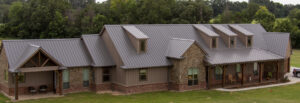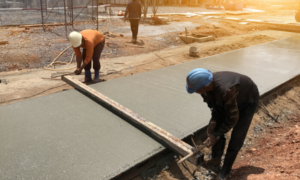If your AC has been making a lot of noise, it is a good idea to call an HVAC technician. This will ensure that the problem is addressed before it worsens.

During AC Repair Sherman Oaks the technician checks if there is a leak or water issue. They also ensure that the level of coolant is right in the system.
The thermostat is one of the most important parts of an air conditioning system. If it’s not functioning correctly, the whole system can malfunction, and your home may experience discomfort and energy waste. Fortunately, you can easily identify a thermostat problem and take steps to fix it.
Start by ensuring that the unit is receiving power. Check the circuit breakers to see if they’ve been tripped. If they have, switch them back on. Then, replace the batteries if your digital thermostat is battery-powered.
Older electromechanical thermostats can sometimes become dislodged from their mounting surfaces, especially if they’re located near doors or windows. If they’re not mounted securely, this can cause them to read inaccurately and affect your home’s temperature. If this is the case, an HVAC expert can relocate the thermostat or install new mounting brackets for it.
It’s also possible that your thermostat is experiencing a complication caused by a dirty or dusty sensor. This can cause the thermostat to misread the room’s temperature, leading it to turn on and off frequently, or to overshoot its intended target. To prevent this, regularly clean your thermostat’s sensors using a cloth or brush.
Finally, it’s also possible that your thermostat is disconnected from the AC system. This can happen when the unit is installed incorrectly, or if it gets jostled. Luckily, this issue is easy to fix and rarely causes damage to your AC system.
As a rule, the lifespan of your thermostat is about ten years. If you’re approaching this limit, it’s time to call an AC repair professional. This way, you can have your old thermostat replaced with a new one that offers better performance and more advanced features.
Condenser
The condenser is the large piece of equipment that sits outside and releases hot air absorbed by the compressor and evaporator. It contains a fan, condenser coils, and a refrigerant line that carries vital coolant between the indoor and outdoor units to carry out heat exchange. The condenser unit needs to be in good working order for the entire system to function.
A condenser problem can lead to high energy bills and poor cooling performance. The air conditioner may still run, but it will work harder to cool the house, and that takes more energy. If you see puddles of refrigerant under the unit, or the condenser is producing less cool air than usual, call a professional to check out the problems.
Another sign of a condenser problem is an irregular pressure reading on the air conditioning gauges. This could mean that the compressor isn’t functioning properly, and it can also indicate a clogged air filter.
It’s important to have regular AC maintenance and to change the air filters regularly. A clogged filter prevents air flow and forces the condenser to work harder. A qualified technician can check the evaporator and compressor for signs of problems and clean the coils to keep the AC running smoothly.
The cost of an AC repair depends on the size and type of your home’s heating and cooling system, as well as its age and location. For example, a packaged HVAC system with an outdoor unit is more costly to repair than a split system. It’s also more expensive to replace an older condenser than to repair a newer one. Also, labor rates are higher in summer. It’s best to schedule repairs during the off-season when rates are lower.
Blower
The blower motor is the component that circulates air throughout your system. It helps to keep temperatures consistent throughout your home and improves air quality by filtering dust and other contaminants from the circulating air. During regular AC maintenance services, your blower fan is cleaned and lubricated to minimize friction between the blower blades and the motor shaft.
A clogged blower or overly worn motor will result in weak or no airflow through your vents. This is a clear sign that your blower motor is about to fail and needs replacement or repair.
If you hear a banging or rattling noise while the blower is running, turn off your system until you speak to a professional. These sounds could indicate a dangerous overheating problem that could damage other AC parts and potentially cause a costly AC repair bill.
Some modern furnaces have a direct drive system for the blower motor, which eliminates a pulley and belt. However, older furnaces may use a belt system that connects the motor shaft with a fan. In both cases, the belt can stretch or slip, causing the blower to not run at the correct speed. Your technician will inspect the motor, and depending on its condition, will either repair or replace it.
If you have a variable-speed motor, your technician can adjust the fan to operate at a specific speed based on demand. This reduces energy consumption and creates a more consistent temperature.
Compressor
The compressor is the heart of an AC unit, transforming raw gases into cool, dry air. It has pistons, bearings, and other components that can wear out or fail. When these parts are damaged, refrigerant isn’t properly pressurized to produce cool air. A faulty compressor is a major repair that can cost more than the cost of a new AC unit.
The size of an air compressor depends on the volume of compressed air it produces. A small unit has a piston-and-cylinder design that requires more frequent maintenance, while larger units use a screw-type compressor that has lower operational costs and can operate continuously.
Some manufacturers also offer industrial compressors in different styles and models. For example, an autobody shop with heavy paint application might choose a radial-screw compressor that is more durable than a piston model. An industrial compressor can handle high-pressure, high-temperature applications. It can also be cooled, dried, and filtered to meet specialized air quality requirements.
A drain pan collects condensation that drips from the evaporator coil and funnels it to a drain line. It’s important to keep it clean and clear of obstructions, as a cracked drain pan may need to be replaced.
If you notice signs of a failing air conditioner, it’s best to consult with a professional technician right away. They can help you weigh the pros and cons of repairing or replacing your unit. Homeowners can use this rule of thumb: If a repair bill is 50 percent or more of the cost of a new unit, it’s usually more financially prudent to replace the old one rather than continue to pay for expensive repairs.
Insulation
Insulation is the material in walls, attics, floors and ceilings that slows heat exchange. It keeps warm air from escaping during cold days and it prevents hot summer breezes from heating up your house. Without adequate insulation, your AC system works harder to maintain the optimal temperature in your home and it can wear out quickly. Insulation also helps to reduce operating noises.
Insulating your home can be a do-it-yourself project. However, it’s normally better to have a professional do it for you because they can identify the areas where there are gaps or leaks. Then they can seal them and add more insulation if necessary. They can also install ducts that are well-insulated to ensure that cold air stays contained within your home rather than leaking out through the ductwork and into other rooms of your house where it doesn’t belong.
Poor insulation in your attic and walls can lead to higher energy costs and a sub-par performance from your AC system. Insufficient or damaged insulation can also make your house feel stuffy, so it’s important to get it checked out by a qualified HVAC technician as soon as possible.
Adding more insulation in your attic is a relatively inexpensive project that any skilled DIYer can complete. For wall insulation, you can use fiberglass batting or foam board panels. The insulation needs to be properly sealed around any standard openings such as hatches. For more complex projects, such as insulating a duct, it’s best to have a skilled professional do it for you. They can also insulate a new roof and prevent moisture from damaging it. They can also install spray foam insulation and other types of insulating materials that are designed specifically for AC systems.





